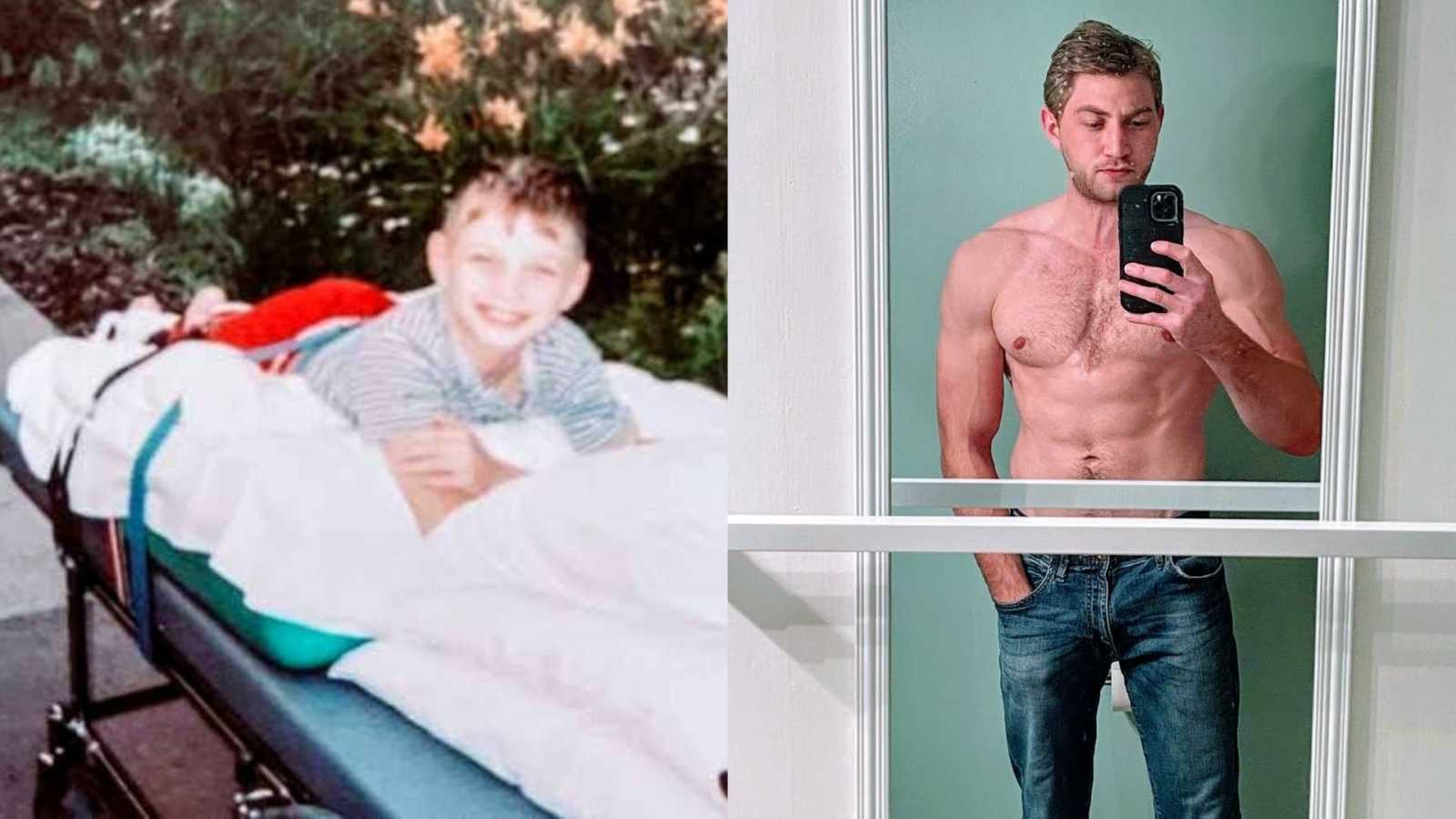Spastic Diplegia Cerebral Palsy
“When one hears or sees the term cerebral palsy, they often think, ‘slow,’ ‘disabled,’ and ‘not normal,’ but with first hand experience, this is simply not true. Sure, those affected with cerebral palsy have a neurological condition that sets them apart from the average crowd, but who wants to be normal anyway? My name is Matthew Schlafly and I was diagnosed with Spastic Diplegia Cerebral Palsy at just two years old.
On a calming summer day, my mother received a call from my father, ‘I think I figured out what he has. I saw this before during my residency. I believe he has cerebral palsy. We need to take him to Children’s to get a proper diagnosis and find out what is causing him to walk this way.’ Both parents being in the medical field themselves, panic mode set in; this marks the long, uphill journey known as my life. ‘This kid does not have cerebral palsy.’ Those words coursed through my mother’s worried brain.
The doctor at Children’s turned us away and denied a diagnosis my father was fairly certain about. Confused and frustrated, my parents continued to look around for answers. One day, a doctor at Children’s called my mother and confirmed the diagnosis. My father was right. This was only a small relief as the much bigger challenge was to get treatment for the disorder. While in physical therapy, my therapist mentioned to my mother about Gillette Children’s Hospital, located in St. Paul, Minnesota. As their website says, ‘Gillette specializes in treating children who have complex conditions, rare disorders, and traumatic injuries.’ This seemed to be the perfect hospital to seek treatment, except it was 500 miles away. No small drive, but it was worth a shot.
Once up at Gillette Hospital, we were greeted with a large painting of Dr. Gillette, the founder of the very hospital we were in. From then on, every time we walked by this painting, we saluted Dr. Gillette. Over the course of the day, we met with several doctors and nurses to discuss how my future was going to pan out, and our first true appointment was set a year in advance on July 13, 2005. The first step when dealing with Spastic Diplegia is to have a procedure done called a Dorsal Rhizotomy. This is an extensive operation where doctors and nurses carefully cut a 2-foot long incision on my back to individually sever 33.3% of my nerves, ultimately causing the spasticity in my legs.
Dorsal Rhizotomy Recovery
Post operation, I had to recover in the hospital for six long weeks. During this time, I endlessly apologized to my parents for watching their son be in pain. I was just seven years old. As I started to get better, I distinctly remember sitting up in the hospital bed, dangling my legs over the edge, and felt a strong pull at my hips. I looked down, and the pull was caused by my legs. Due to the surgery, I lost complete feeling in both my legs. Staring at my legs, I did not know if I wanted to cry or express frustration. I was different and I didn’t want to be. Days turned into weeks, weeks turned into months, and I was finally able to relearn how to walk. This may seem like a big accomplishment, but at the time, I felt like I was moving backwards and it was embarrassing.
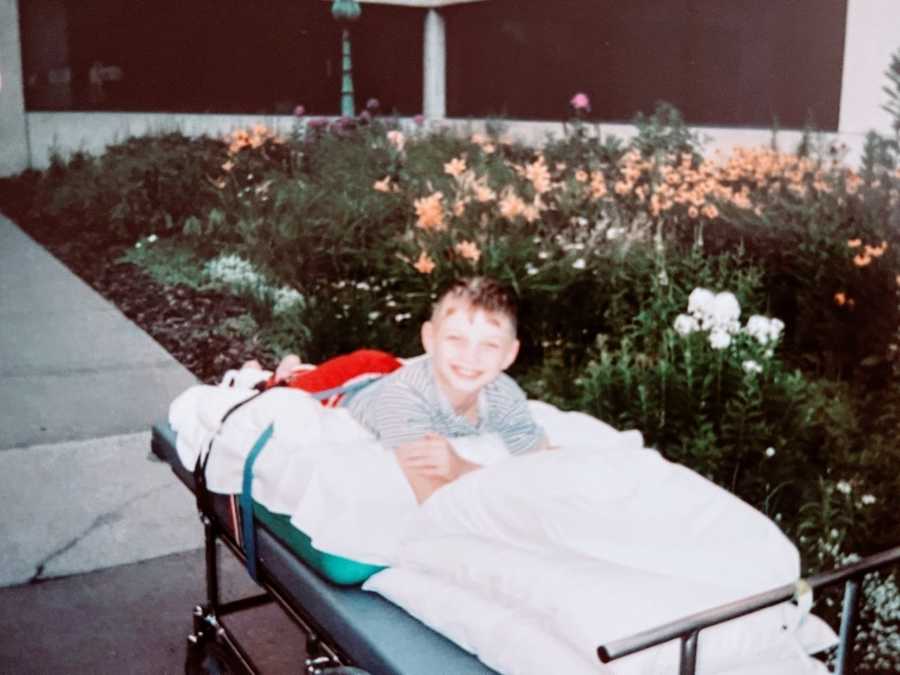
During 2006, my parents and I made a trip up to Gillette to have a gait study. In a large room with plenty of light and video cameras pointing at some markers on the floor, analysts asked me to walk and run. Much like how characters in video games are created, I wore multiple shiny metallic balls on various parts of my body, which creates a skeletal structure of my walking and running patterns. My height, weight, and flexibility were also tested. As patients with cerebral palsy know, we are not able to wiggle our toes. To this day, wiggling my toes is a challenge. Shocked by how easy the day was, nine-year-old me had a big smile on my face.
Continuing physical therapy throughout the rest of the year, surely I had to be finished with my surgeries, right? Unfortunately, this was not the case. On October 22, 2007, I had two femoral osteotomies, bilateral foot reconstruction, and a right tibia osteotomy. My muscles were so tight in my legs, they were twisting the bones. The doctors and nurses made 10 small incisions on my hips, legs, and feet to physically straighten out the bones and set them in place with plates, screws, and staples. As far as my feet go, I never had arches. By taking out bone and inserting bone in various places, the doctors and nurses were successfully able to man-make arches, and they look phenomenal (if I do say so myself).
Going through the airports, on the other hand, was a nightmare. The TSA was all over me when I set off every metal detector imaginable. This was the attention I did not ask for and it embarrassed me when I was treated like a criminal while every pair of eyes were on me. I felt small, powerless, and misunderstood. I remember when I went back to Kirk Day School, the elementary school I attended from 1st through 6th grade, outdoor recess during winter was brutal. I truly felt cold to my core due to the hardware in my legs. I remember my siblings moved my mattress from the second floor to the first floor because I could not go up the stairs. This was my new room for a while until I recovered.
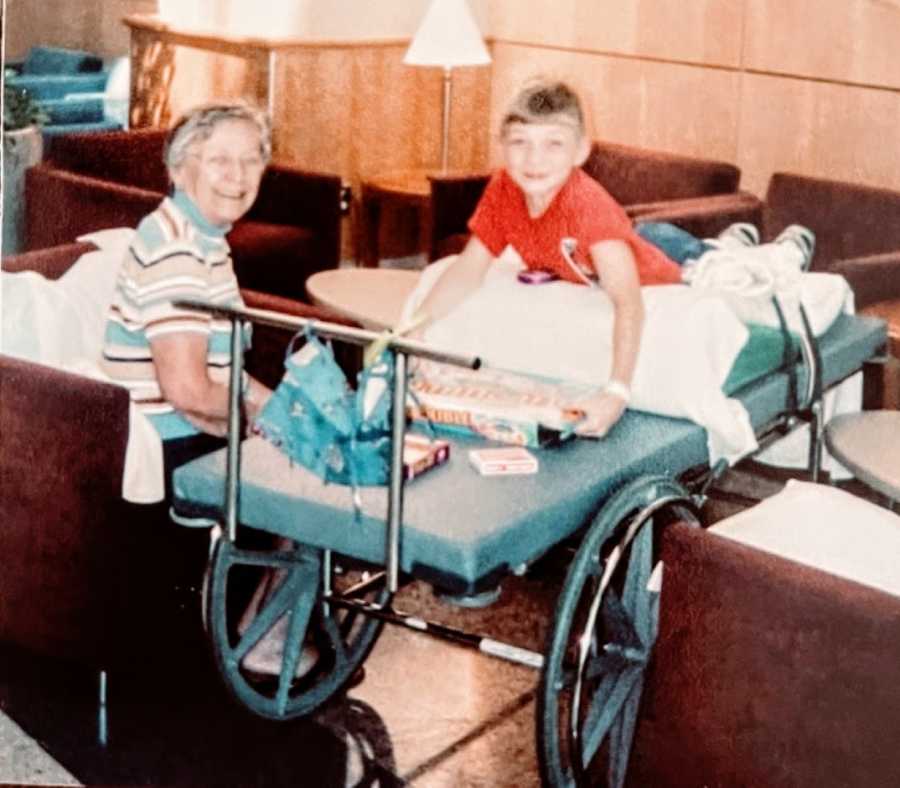
Cerebral Palsy Complications
In addition to this, I had two casts I wore that went up just below my knee and a bar in between the casts. This prevented my legs from wanting to rotate naturally. It was truly amazing how tiring it was to keep my legs still to prevent internal injury. I never wanted to move my legs so badly. Every so often, my parents took the bar off for no more than a half hour. Of course, this had to be cleared by the doctors first. Despite the casts still on my legs, it felt amazing to be able to move and rotate my legs. Although I had pain day in and day out, nothing was worse than having my tutor show up at the front door every morning right before Scooby Doo came on. At the time it was beyond difficult, but I am truly grateful my tutor spent hours making sure my homework and projects were completed.
Life felt unfair. I did not know why it was me who had to go through something horrific like this. On September 9, 2008, the hardware in my legs were completely removed. No new incisions needed to be made, thank goodness. I was beyond fragile and had to be especially careful with every move I made; otherwise, my bones could have reverted back to the way they were. My parents, my doctors, my nurses, and I did not want this to happen. Walking and stairs were not my friend at this point, but at least I had the elevator to maneuver between floors during school hours.
Although I had a few positive things going for me, I definitely felt like the world did not want me to succeed, let alone be able to walk freely without a wheelchair, crutches, or a walker. On August 13, 2012, I had a posterior tibialis lengthening on my left leg where the doctors and nurses made a small incision to combat my left leg from turning in automatically with each step I took. This caused me to trip quite a bit. This was the first surgery where I was conscious, but the area where they did the procedure was numbed and I was put on a small sedative. To this day, my legs are hypersensitive. This means since I cannot feel my legs, any small touch causes my brain to assume I am getting hurt and I pull away quickly. It is a strange concept to grasp a lack of feeling causes the area, in this case my legs, to be more sensitive than ever before.
The greatest symbol to get me through this rough journey was my cheetah blanket. Gillette Children’s Hospital gives each new patient a blanket to take with them before their first surgery. I chose this because Cheetah’s are brave, quick, and experts at camouflage. I had to be brave before, during, and after each surgery. I had to be quick to answer all questions the doctors and nurses asked honestly. As with the camouflage? I had to hide my fears the best I could, and it was beyond difficult to do so, especially as a young child not knowing what was happening to me. Dr. Deborah Sheldon Quanbeck did all of my surgeries and I am very grateful for her. She handled each operation with care and professionalism. Never skipping a beat, she did an amazing job helping my parents as well as me know exactly what was going on every step of the way. Dr. Quanbeck never said one bad thing about me and to this day, she refers to me as a beast and an absolute rockstar.
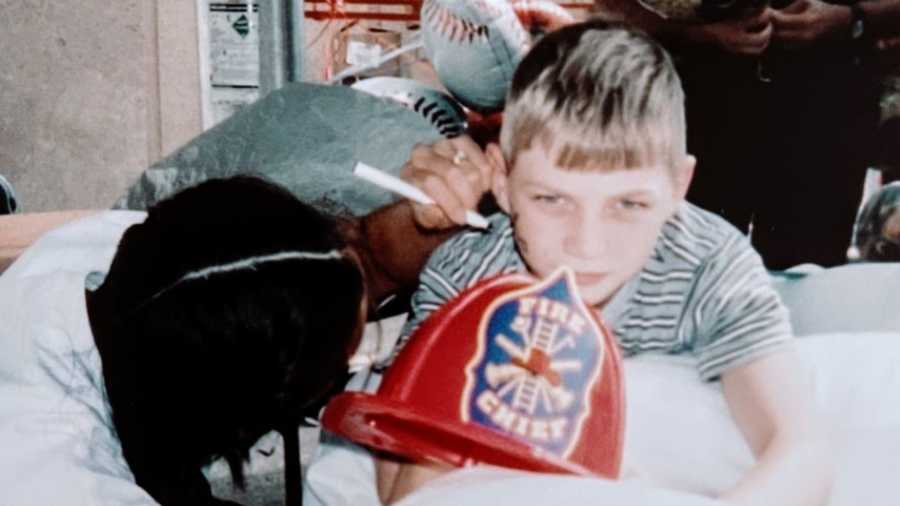
Athletic Passion
Being treated differently because I had Cerebral Palsy was always present. Every day I knew I was the ‘kid with the disability.’ I’ve been picked last on so many teams during school, the instructors had to tell the students I had to be picked first. How embarrassing was that? Of course I wanted to participate in sports and activities, but what good is it if the only reason why I am on a select team is because I am disabled? While I was at Westminster Christian Academy, my dad wanted me to go into wrestling. Starting in seventh grade and ending my senior year, I never truly enjoyed the sport. Every time my opponent won was because of my cerebral palsy. It was a constant reminder I am messed up and do not belong on the team. Countless times I got in arguments with my coach and was infuriated by all other athletes better than me. It is a terrible feeling to not be good at something. The last day of senior year practice, my coach’s grandpa, who also helped out on the wrestling team, told me I was his hero. That was an amazing feeling to be told that.
Now, I am 23 years old and I am an ISSA Certified Personal Trainer with a mission to help others surpass their roadblocks in their heart, soul, and mind. I started lifting when I was just nine years old at Power Play, and as of February 4, 2021, I started working there as an ISSA Certified Personal Trainer, building up my clientele. I had to learn the hard way it takes one step at a time. Looking back on the years of surgeries, rehab, and physical therapy, I did not know how I did it, except by putting one foot in front of the other and facing challenges head on. Lifting is more than the physical body, it is for the soul and mind as well. My dream is slowly becoming a reality – working with clients, getting to know them, and helping them every step of the way in and out of the gym. Each day starts with, ‘What can I do today to make this happen?'”
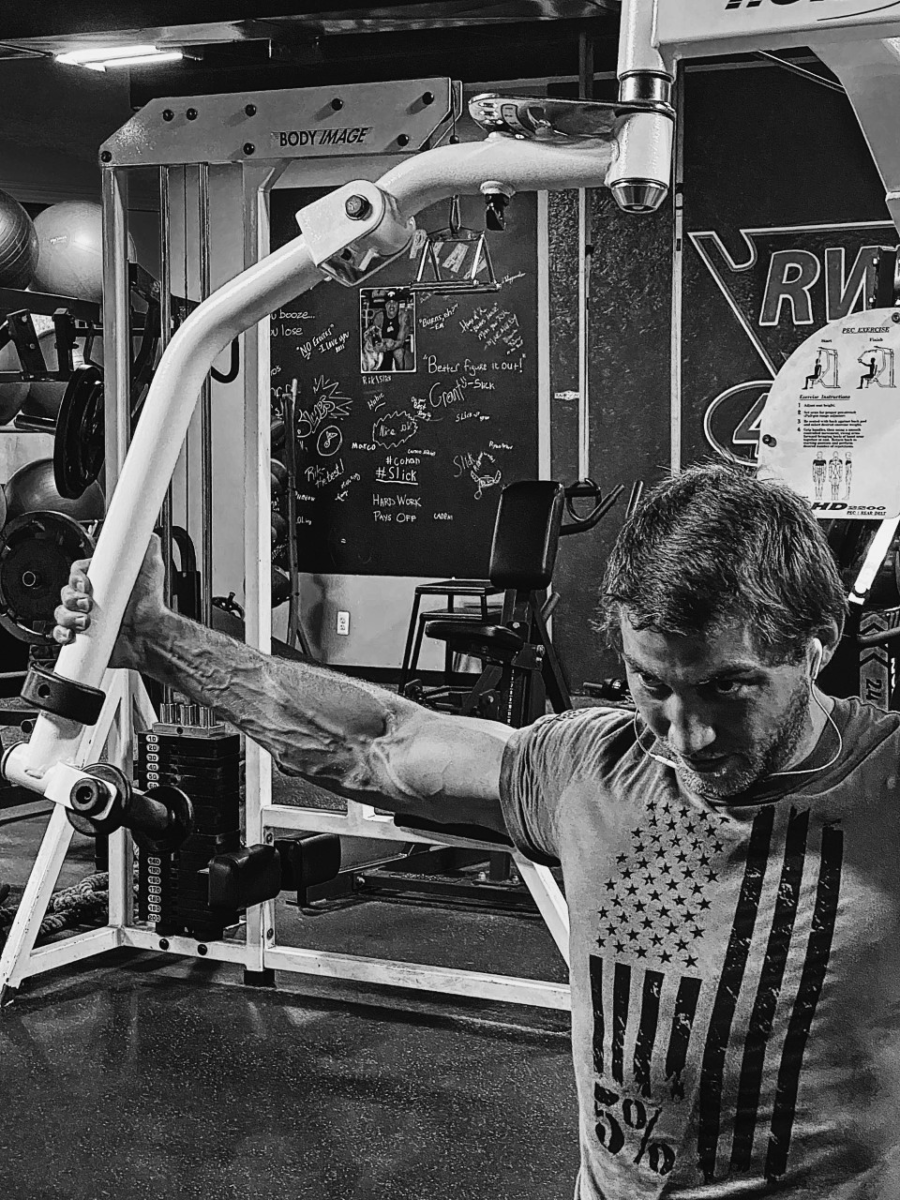
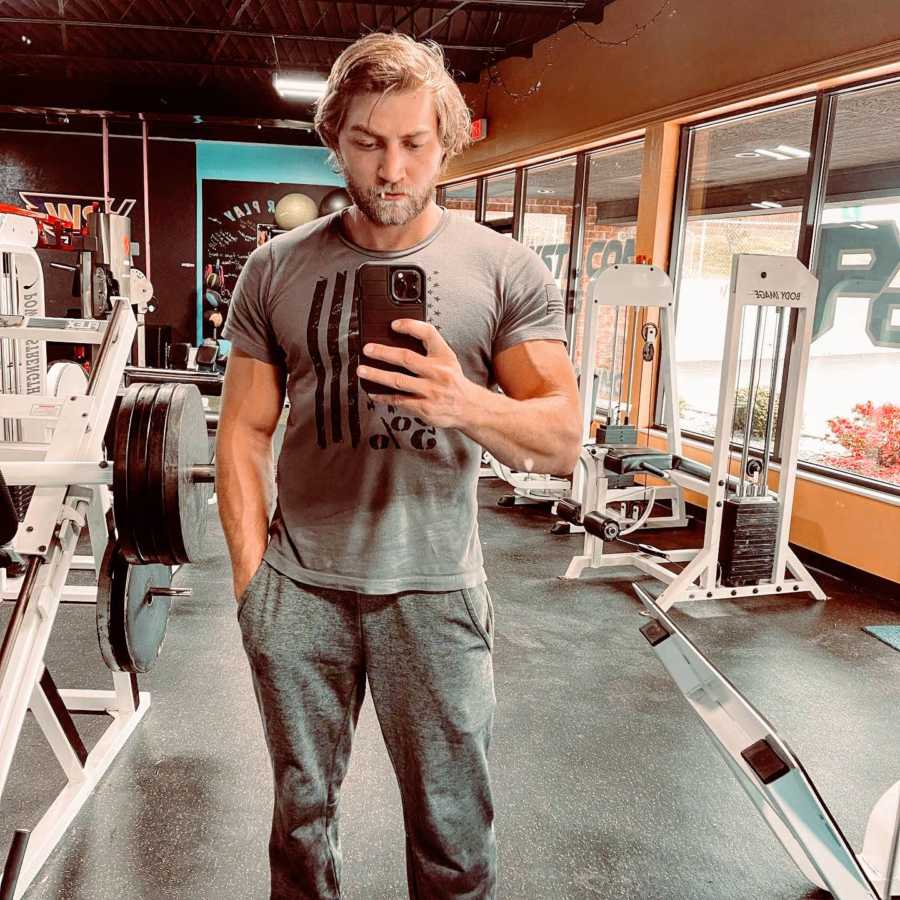
This story was submitted to Love What Matters by Matthew Schlafly. Submit your own story here, and be sure to subscribe to our free email newsletter for our best stories, and YouTube for our best videos.
Read more stories like this here:
Do you know someone who could benefit from this story? Please SHARE on Facebook to let them know a community of support is available.

